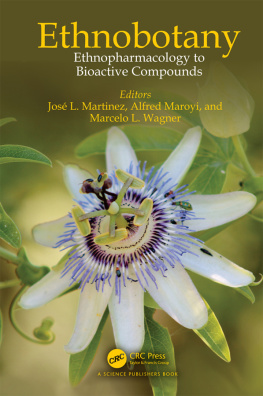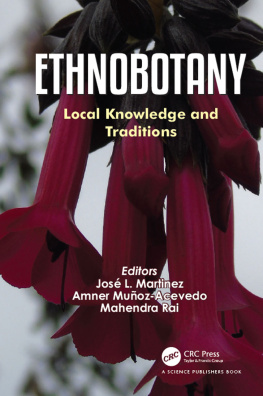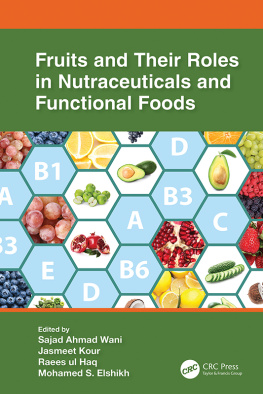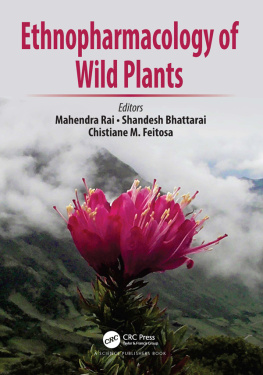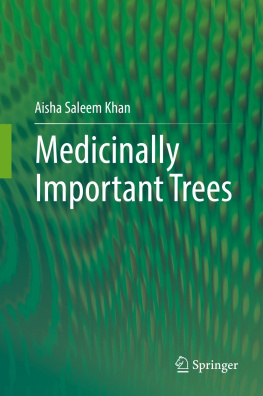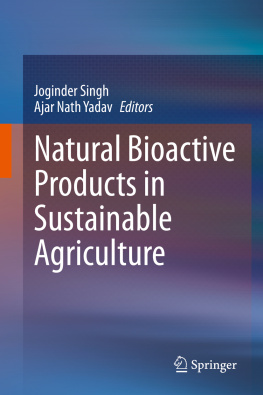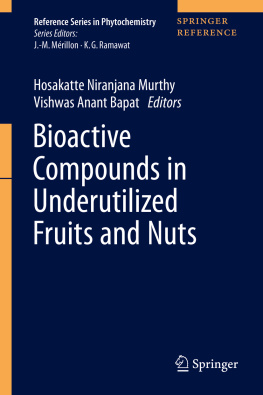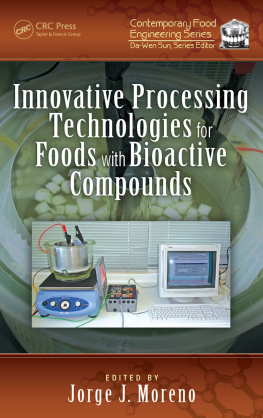Bookmarks
Pagelist
Guide

Ethnobotany Ethnopharmacology to Bioactive Compounds
Editors
Jos L. Martinez
Vicerrectory of Research, Development and Innovation Universidad de Santiago de Chile
Santiago, Chile
Alfred Maroyi
Department of Botany, University of Fort Hare Alice, South Africa
Marcelo L. Wagner
Facultad de Farmacia y Bioqumica, Universidad de Buenos Aires Buenos Aires, Argentina

Cover credit:
Cover photograph reproduced by permission of Ignacio J. Agudelo, University of Buenos Aires, Argentina.
First edition published 2023
by CRC Press
6000 Broken Sound Parkway NW, Suite 300, Boca Raton, FL 33487-2742
and by CRC Press
4 Park Square, Milton Park, Abingdon, Oxon, OX14 4RN
2023 Jos L. Martinez, Alfred Maroyi and Marcelo L. Wagner
CRC Press is an imprint of Taylor & Francis Group, LLC
Reasonable efforts have been made to publish reliable data and information, but the author and publisher cannot assume responsibility for the validity of all materials or the consequences of their use. The authors and publishers have attempted to trace the copyright holders of all material reproduced in this publication and apologize to copyright holders if permission to publish in this form has not been obtained. If any copyright material has not been acknowledged please write and let us know so we may rectify in any future reprint.
Except as permitted under U.S. Copyright Law, no part of this book may be reprinted, reproduced, transmitted, or utilized in any form by any electronic, mechanical, or other means, now known or hereafter invented, including photocopying, microfilming, and recording, or in any information storage or retrieval system, without written permission from the publishers.
For permission to photocopy or use material electronically from this work, access
Trademark notice: Product or corporate names may be trademarks or registered trademarks and are used only for identification and explanation without intent to infringe.
Library of Congress Cataloging-in-Publication Data (applied for)
ISBN: 978-1-032-34814-8 (hbk)
ISBN: 978-1-032-34815-5 (pbk)
ISBN: 978-1-003-32396-9 (ebk)
DOI: 10.1201/9781003323969
Typeset in Times New Roman
by Radiant Productions
Preface
The development of natural products as pharmaceutical drugs and health products has been established on the basis of therapeutic properties of traditional medicines. Traditional medicines represent an important source of multi target therapeutics involving bioactive compounds contained in plant extracts. These bioactive compounds are responsible for biological activities associated with plant species used as traditional medicines. The multiple bioactive compounds usually have additive, antagonistic and synergistic effects. Currently, the screening of natural products such as medicinal plants has become an effective method for rapid selection of bioactive compounds with effective biological activities. Therefore, phytochemical research based on ethnopharmacology is considered an effective approach in the discovery of novel bioactive compounds with potential as drug leads and development process. Plant extracts used in indigenous pharmacopoeia of many cultures for treating several human and animal diseases represent a source of bioactive compounds required in the pharmaceutical drug discovery process.
The therapeutic properties of bioactive compounds of medicinal plants still continue to be the subject of many researches throughout the world. Hence, in this book, an ethnobotanical review based on ethnopharmacology as an effective approach in the discovery of novel bioactive compounds is presented. The chapters are written by specialists from different countries with deals with the molecular basis of the bioactive compound flavonoid from the perspective of modern phytochemistry. This book, therefore, is an important addition to the pharmaceutical literature as a single reference covering these essential aspects of ethnobotany focusing on the ethnopharmacological approach and the importance of bioactive compounds as potential pharmaceutical drug leads
Jos L. Martinez, Chile
Alfred Maroyi, South Africa
Marcelo L. Wagner, Argentina
Contents
Amner Muoz-Acevedo, Cindy P. Guzmn, Nubellys M. Peralta, Mara C. Gonzlez and Martha Cervantes-Daz
Jos L. Martinez, Onder Yumrutas, Maite Rodriguez, Miguel Rios, Rao Zahid Abbas, Luisauris Jaimes and Ali Parlar
Filipe Kayod Felisberto dos Santos, Ian Gardel Carvalho Barcellos Silva, Arquimedes Lopes Nunes Filho and Valdir Florncio da Veiga Jnior
Anuar Salazar-Gmez, Candy Carranza-lvarez, Fabiola Domnguez and Angel Josabad Alonso-Castro
Zilda Cristiani Gazim, Evellyn Claudia Wietzikoski Lovato, Brbara de Souza Arcanjo, Maria Graciela Iecher Faria Nunes, Suelen Pereira Ruiz Herrig, Ana Daniela Lopes, Carla Maria Mariano Fernandez, Giani Andrea Linde Colauto, Nelson Barros Colauto and Juliana Silveira do Valle
Felix Krengel, Ricardo Reyes-Chilpa, Karla Paola Garca-Cruz, Olga Lucia Sanabria-Diago, Willian Castillo-Ordoez and Laura Corts-Zrraga
Mara-Elena Cazar, Chabaco Armijos and Omar Malagn Avils
Alfred Maroyi, Ruvimbo Jessy Mapaya, Ahmad Cheikhyoussef and Natascha Cheikhyoussef
Onder Yumrutas, Jos L. Martinez, Ali Parlar, Bernardo Morales, Pinar Yumrutas and Luisauris Jaimes
Cecilia B. Dobrecky, Marcelo L. Wagner, Pablo A. Evelson and Silvia E. Lucangioli
Chapter 1 Taking Advantage of the Therapeutic/Nutritional Properties of Some Medicinal Plants for Use in Animal Feed
Amner Muoz-Acevedo,
Departamento de Qumica y Biologa, Universidad del Norte, Barranquilla, Colombia.
Grupo Investigaciones Ambientales para el Desarrollo Sostenible, Facultad de Qumica Ambiental, Universidad Santo Toms, Bucaramanga, Colombia.
Introduction
The Farm Management and Production Economics Service of the FAO Department of Agriculture is raising awareness of the role of wild/medicinal plants in many developing countries in which the population bases its economy on agroforestry practices/systems (combining agriculture and livestock, e.g., agrosilvipastoralism). In those cases where the rural population of these countries depends to some extent on livestock (it is considered as a source for social security and food) for their livelihood, ca. 3035% of losses occur in the animal husbandry sectors due to lack of good sanitary/hygienic (diseases) and food/nutritional practices, as well as environmental conditions (food shortage and lack of water resources) ().
Some of those wild plants from agropastoral farm households, in addition to being used as medicine and food for humans, are also used as forage/fodder (growth promoters) and medicine for animals (ethnoveterinary); and from the applications mentioned above, these have helped partly to solve the problem, reaching an importance during the last decade, due to the discovery of some effective products that are a cheaper, easier, and more sustainable alternative to synthetic drugs ().
Consequently, the use of the resources and the biodiversity of the countries has made it possible to find some plants that, based on their chemical compositions, could be used as available/suitable sources of food (for man/animals) providing the basic nutritional requirements, as well as being useful to alleviate/protect/prevent ailments/ diseases; these plants could act as growth and health promoters ().

